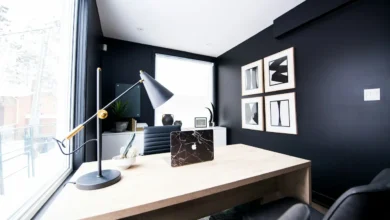Budget Business Bootcamp
Budget Business Bootcamp: 5 Free Online Resources for Entrepreneurial Education
Whether you’re launching your business from a café or a serviced office with private workspaces, entrepreneurship incurs costs. Fortunately, there are numerous free online resources available to help aspiring entrepreneurs start and run a business. Let’s take a look at five invaluable websites that offer comprehensive educational content to boost your entrepreneurial skills and business budgeting acumen.
1. Coursera
Coursera is a treasure trove of educational content, providing access to courses from top universities and organizations around the world. For entrepreneurs, Coursera offers a variety of free courses that cover essential topics such as business planning, financial management, marketing strategies, and more.

Courses like “Introduction to Financial Accounting” by the University of Pennsylvania and “The Strategy of Content Marketing” by the University of California are particularly beneficial. The platform’s user-friendly interface and flexibility allow you to learn at your own pace, making it easier to balance your studies with other responsibilities. Additionally, Coursera provides the option to earn certificates for a fee, which can add value to your resume.
2. Khan Academy
Khan Academy is well-known for its vast library of free educational videos and resources. While it initially focused on K-12 education, it has since expanded to include a range of subjects relevant to entrepreneurs.
Courses like “Finance and Capital Markets” and “Entrepreneurship” offer valuable insights into the financial aspects of running a business. Khan Academy’s straightforward and engaging teaching style makes complex concepts more accessible. The platform also provides practice exercises and quizzes to reinforce your learning, ensuring you have a solid grasp of the material.
3. edX
edX is another excellent platform that offers free online courses from prestigious institutions such as Harvard, MIT, and Berkeley. For those interested in entrepreneurship, edX features courses like “Entrepreneurship in Emerging Economies” by Harvard University and “Business Foundations” by the University of British Columbia.
These courses cover a broad spectrum of topics, including business models, financial analysis, and strategic planning. edX’s interactive learning environment includes video lectures, interactive exercises, and discussion forums, allowing you to engage with instructors and fellow learners from around the globe.

4. HubSpot Academy
HubSpot Academy provides a wealth of free online courses specifically designed for entrepreneurs and marketers. Their courses cover a wide range of topics, including inbound marketing, content creation, social media strategy, and sales techniques. Courses such as “Inbound Marketing Certification” and “Social Media Marketing” are particularly useful for entrepreneurs looking to build their brand and attract customers.
HubSpot Academy’s bite-sized video lessons and practical exercises make it easy to learn and apply new skills quickly. Additionally, the platform offers free certification upon course completion, which can enhance your professional credibility.
5. MIT OpenCourseWare
MIT OpenCourseWare (OCW) is an initiative by the Massachusetts Institute of Technology to provide free and open access to its course materials. Entrepreneurs can benefit from courses like “New Enterprises” and “Entrepreneurial Marketing” which are available for free on the platform. MIT OCW includes lecture notes, assignments, and exams from actual MIT courses, giving you a comprehensive learning experience. This resource is particularly valuable for those looking to delve deep into specific subjects and gain insights from one of the world’s leading institutions.
The entrepreneurial world is challenging, but with the right resources, you can equip yourself with the knowledge and skills needed to succeed. Free education content on platforms like Coursera, Khan Academy, edX, HubSpot Academy, and MIT OpenCourseWare will certainly help. By taking advantage of these resources, you can enhance your business acumen and financial literacy, setting the stage for a successful entrepreneurial journey.




